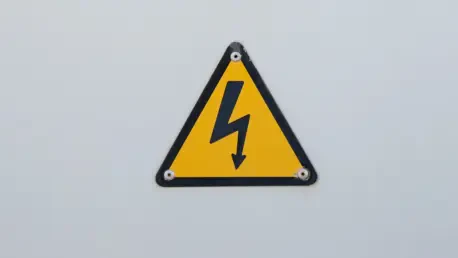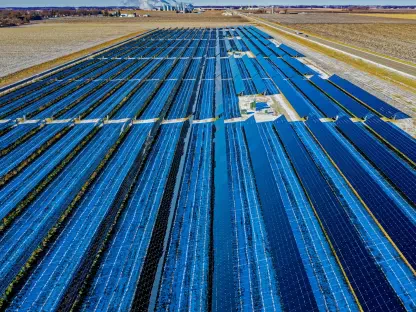Overcurrent protection devices have become foundational elements in modern electrical infrastructure, ensuring a safe and uninterrupted flow of electricity amid growing demand and technological advancement. These devices are essential in mitigating risks associated with electrical anomalies, and their importance is only set to increase. The market is projected to grow from USD 11.33 billion to USD 14.88 billion by 2032, expanding at a CAGR of 3.47%. This reflects the global reliance on advanced electrical systems driven by industrialization and the integration of renewable energy sources.
The Drive Behind Market Expansion
The Role of Industrial Automation and Power Consumption
Industrial automation has sparked significant demand for reliable electrical solutions, highlighting the critical need for robust overcurrent protection devices that can ensure minimal disruptions. A surge in automation across industries such as manufacturing and logistics has underscored the necessity of dependable power frameworks. Robotics and automated systems increasingly rely on sophisticated protection systems to maintain operational continuity. Current trends reflect a pressing need for advanced solutions capable of addressing the complex demands of automated and interconnected environments.
Concurrently, burgeoning levels of urbanization and the electrification of transportation exacerbate the strain on global power systems. This growing pressure necessitates the evolution of overcurrent protection devices to ensure optimal performance, safeguarding against potential disturbances that could lead to detrimental operational setbacks. These demands are further amplified by the rapid adoption of smart grid technologies, emphasizing intelligent solutions capable of real-time monitoring and proactive electrical management.
Impact of Smart Grid Technologies and Regulatory Influence
Smart grid technologies are revolutionizing the modern power landscape by introducing intelligent systems that demand sophisticated protection and control measures. These technologies drive the need for overcurrent devices capable of remote monitoring and predictive maintenance, fostering innovation in protection device design. This shift is critical, as it enhances grid efficiency and reliability, vital components in the face of rising energy consumption and grid complexity.
Regulatory standards also wield significant influence on the market, with governments, particularly in North America and Europe, instituting stringent safety protocols. Companies must revamp legacy systems to align with these regulations, driving the need for modern protection solutions that meet enhanced safety requirements. Though regulatory adjustments can initially pose challenges, adherence to these standards also creates substantial opportunities for growth within the industry, spurring innovation and compliance-driven development.
Technological Advancements and Emerging Opportunities
Breakthroughs in Device Technology
Recent technological advancements have transformed the approach to overcurrent protection, integrating smart solutions like digital circuit breakers and IoT-enabled systems. These innovations provide nuanced control over electrical systems, allowing for enhanced responsiveness to fluctuations and anomalies. As technology continues to advance, these devices are becoming smarter and more adept at adjusting to dynamic changes in electricity demand and supply, promoting both safety and operational efficiency.
Moreover, these technologically advanced devices are transforming the ways in which issues are detected and mitigated, allowing for preemptive action and reducing the likelihood of disruptions. This evolution marks a significant shift away from traditional methods, further emphasizing the importance of innovation in achieving robust overcurrent protection.
Opportunities in Emerging Markets
Opportunities abound in emerging markets across Asia-Pacific, Latin America, and Africa, regions currently experiencing rapid industrial growth and increased electricity demand. As these economies advance, the need for comprehensive electrical protection and infrastructure becomes more pronounced. This presents a valuable landscape for companies specializing in overcurrent protection, offering potential for substantial growth as they cater to burgeoning industrial and commercial needs.
In addition, the power sector itself is faced with expanding generation and distribution networks, necessitating effective fault detection systems. These requirements further bolster the role of overcurrent protection devices in ensuring reliable and efficient energy delivery, reinforcing the market’s significance in these rapidly developing regions.
Trends in Market Segmentation and Regional Dynamics
Diverse Applications Across Sectors
The market for overcurrent protection devices is distinguished by a range of products, including circuit breakers, fuses, relays, and resettable devices. Each type serves specific applications across industrial, residential, commercial, utilities, and transportation sectors, tailored to needs such as varying current and voltage ratings. This diversity ensures that devices can be customized to suit specific requirements, reflecting the nuanced demands of different applications.
Various regions bring unique economic and regulatory landscapes to the table, segmenting the market further. In North America and Europe, technological breakthroughs and stringent safety protocols play a major role, resulting in mature markets with significant investments in modernization and renewable energy initiatives. Meanwhile, regions like Asia-Pacific are marked by rapid industrialization and energy consumption, forging paths to increased infrastructure development and modernization of electrical systems.
Regional Leaders and Market Influencers
North America stands as a leader in implementing modernized grid solutions, with the U.S. at the forefront of deploying smart protection technologies. Grid modernization initiatives, paired with stringent safety standards, have positioned this region as a robust market for advanced protection devices. Europe similarly experiences growth driven by its emphasis on regulatory compliance and renewable energy advancements, particularly evident in countries like Germany and the Nordic regions.
Asia-Pacific, however, emerges as the fastest-growing market, characterized by extensive industrial development and expanding energy consumption, primarily in China, India, and Southeast Asia. This growth is rooted in strategic infrastructure enhancement efforts, which are instrumental in fostering a conducive environment for overcurrent protection devices.
Charting a Path Forward
Overcurrent protection devices have become crucial components in today’s electrical infrastructure, ensuring both safety and the steady flow of electricity in response to escalating demand and technological advancements. These devices play a vital role in reducing risks related to electrical anomalies, and their significance is poised to grow even further. The industry is projected to expand from USD 11.33 billion to USD 14.88 billion by 2032, reflecting a compound annual growth rate of 3.47%. This growth underscores the world’s increasing dependence on advanced electrical systems, which is largely fueled by ongoing industrialization and the integration of renewable energy sources into the energy mix. As we continue to prioritize sustainable energy solutions and technological progress, the role of overcurrent protection devices will become more pronounced, ensuring that our electrical infrastructures remain resilient, efficient, and capable of meeting both current and future energy demands while maintaining safety and reliability.









